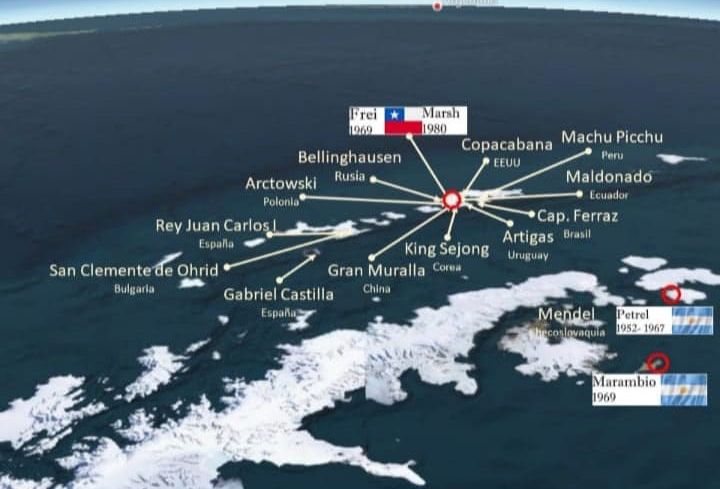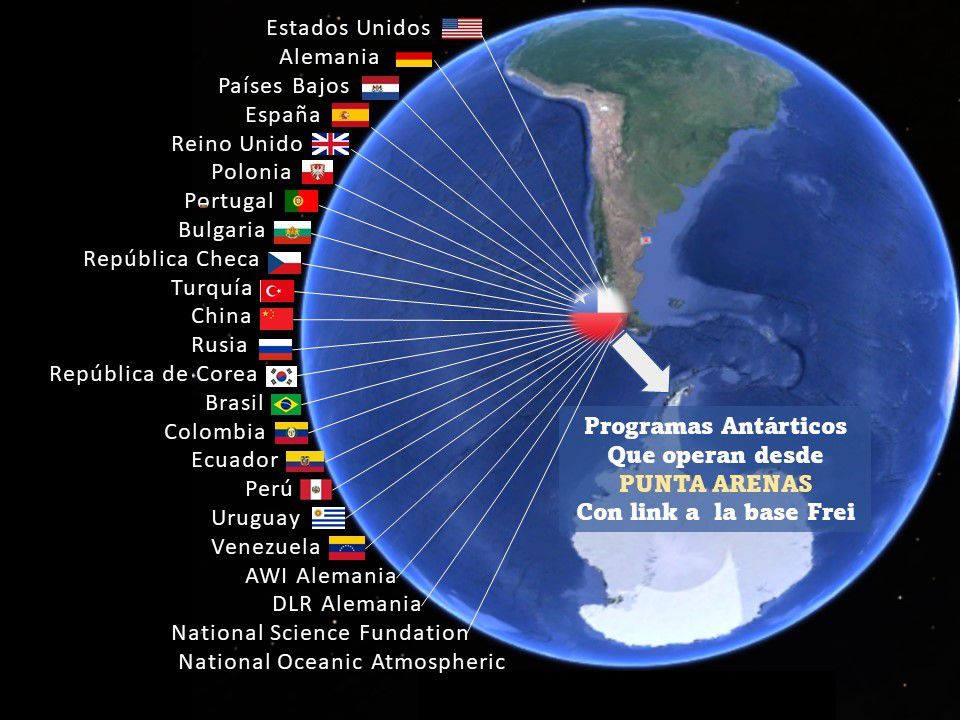We share a summary of the opinion note published in El Diario del Fin de Mundo last Wednesday the 5th , written by Daniel Leguizamón ; who was president of the Fuegian Institute of Tourism (INFUETUR), between 1992 and 2000, where he breaks the myth of Ushuaia as a gateway to Antarctica and demonstrates with figures that this privilege corresponds to Chile.
In his writing, Daniel Leguizamón states that “the ONLY thing that the Republic (Argentina) is a LEADER at the international Antarctic level is what was developed by the government of the brand new province of Tierra del Fuego, ANTARCTICA and the South Atlantic Islands in the '90s. , which is Antarctic-Maritime Tourism .
The former head of INFUETUR recalled that "through active policies" , in the years that he was in charge of the management "we went from 30% in the 1992/1993 season to 95% of the world's total of tourists who left from Ushuaia to see Antarctica in the 1999/2000 season, a percentage that continues to be maintained to this day .
Leguizamón , in his article, shows and based on figures, that during the '90s "Chile had 2 or 3 international Antarctic programs operating from Punta Arenas and Argentina had a few more operating from Ushuaia", but that currently “Twenty-two countries and international organizations operate REGULARLY from Punta Arenas, while Ushuaia only SPORADICLY receives ships and planes whose main operation is established through the Punta Arenas – Teniente Marsh Airfield link at the Chilean Frei Montalva base.”

According to him , this situation is due to the fact that “Chile has developed efficient, comprehensive and “systemic” operational and commercial solutions to articulate both headwaters (Gateway and Antarctica) in order to capture the strategic and lucrative Antarctic activity INTERNATIONAL, while Argentina has always opted for the military option, rejecting everything “attempt to develop Ushuaia as the main world gateway to the white continent.”
And as if to illustrate this situation, which breaks with the myth of Ushuaia as the gateway to Antarctica , Leguizamón maintains that while “Chile has reported more than 150 logistical and tourist operations from Punta Arenas to the Frei Montalva Base, operated by PRIVATE airlines, such as Aerovias DAP, which has been operating tourist and logistical flights to Antarctica for decades, to which airlines have joined foreign companies that operate with tourism, such as Icelander (Icelandic) and others”, from Ushuaia, the closest “gateway” to Antarctica “operated zero (0) private flights, due to the historic and incomprehensible refusal of the Antarctic Joint Command, to "who can only operate military flights" , which shows, according to the former president of INFUETUR, how poorly exploited this route to the frozen continent is in terms of logistics and science.
In his note, Leguizamón states that in cities such as Christchurch (New Zealand), Hobart (Australia), Cape Town (South Africa) and Punta Arenas (Chile), a significant proportion of Antarctic scientific, logistical and tourist air operations “are developed by COMPANIES. PRIVATE, under the strict regulations of the Antarctic Treaty System […] Except in Argentina, where the unitary military conception has historically provided for denying Ushuaia and the private sector any transcendental role, both in the positioning and international Antarctic projection, contrary to the "of the criteria of the Antarctic Treaty System that prevail in the 21st century and of the interests of the country itself," the former official complained bitterly.
In his opinion, "unlike Chile, which openly supports Aerovías DAP, the Punta Arenas airline company that has been operating international Antarctic logistics and tourism for decades, the Joint Antarctic Command has never allowed the operation of the solid and highly professional enterprise of the owners of Heliushuaia, whose pilots have much more experience in flying in high latitudes and severe climates, similar to those they can find in the extreme north of the Antarctic Peninsula, 1000 km from Ushuaia and 4000 km from the south pole.”
The former president of INFUETUR went much further by asking himself “Why is it possible TODAY to operate at the Petrel Base (located at sea level) and since 1967 NOT…?” , adding another question that is difficult to answer: “why was Marambio chosen instead, located 200 meters above sea level, absolutely inaccessible by land, so all supply must be carried out by helicopter, at a sky-high cost? ” .

For Leguizamón, there are "lengthy official versions and others that can only be heard in confidence" that explain why the Argentine Air Force flatly refused to allow Argentina's air operations base in Antarctica to remain in the hands of a base. naval". And although the former president of INFUETUR does not finish making these versions explicit, he does give an account of the solution by suggesting that “the issue seems to have been unblocked with the “Joint Base” model of 2013. BUT… with the landing strip operated by the Force Aerial… (each in their own domain)”.
For Leguizamón, Argentina took half a century to understand “that a base of operations at sea level was necessary, which significantly facilitates logistics, which drastically reduces operating costs and that national interests are above the corporate interests of the Armed Forces. .” To which he added that "it would be good if, almost a quarter of the 21st century has passed, we do a profound CONCEPTUAL and operational reengineering to promote an authentic PARADIGM CHANGE that allows us to capitalize on the extraordinary potential of Ushuaia as an optimal connection with Antarctica," encouraging the local private activity and capitalizing on the great capabilities of our country in the matter, “but not from a corporate and centralist vision, but for the benefit of the true national interest,” stated the former official.
Fountain:
The Diary of the End of the World


